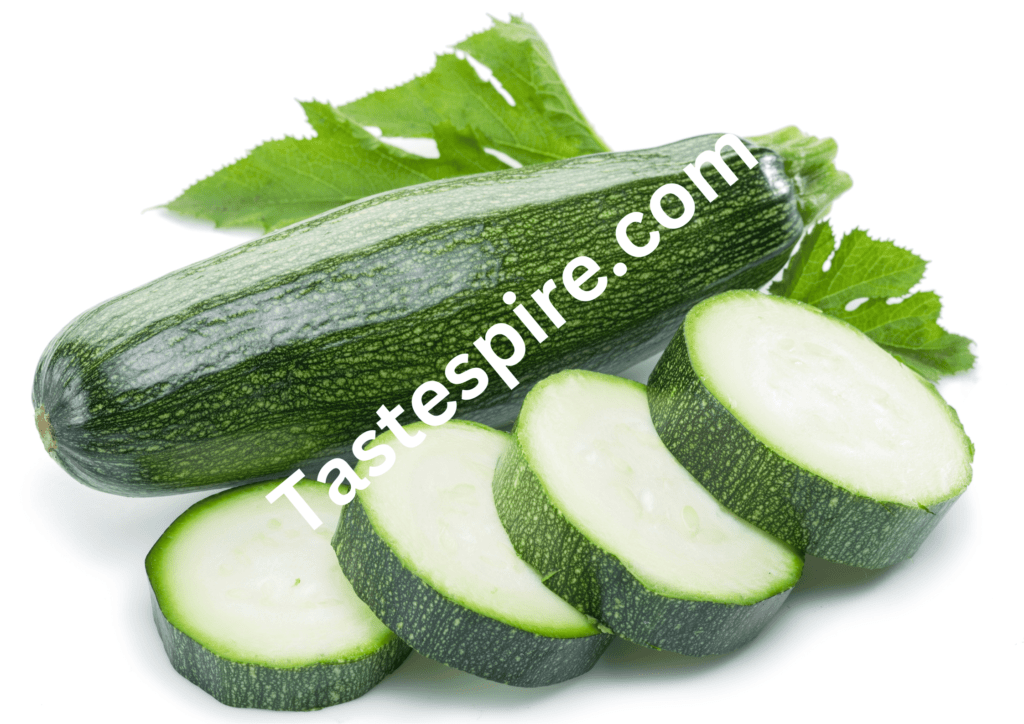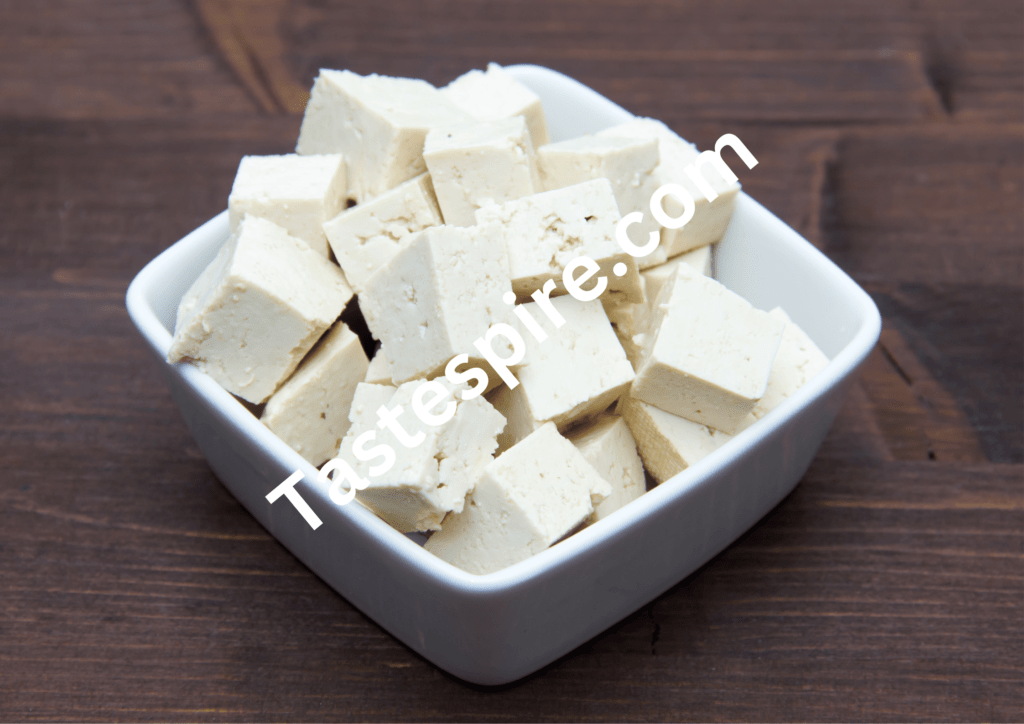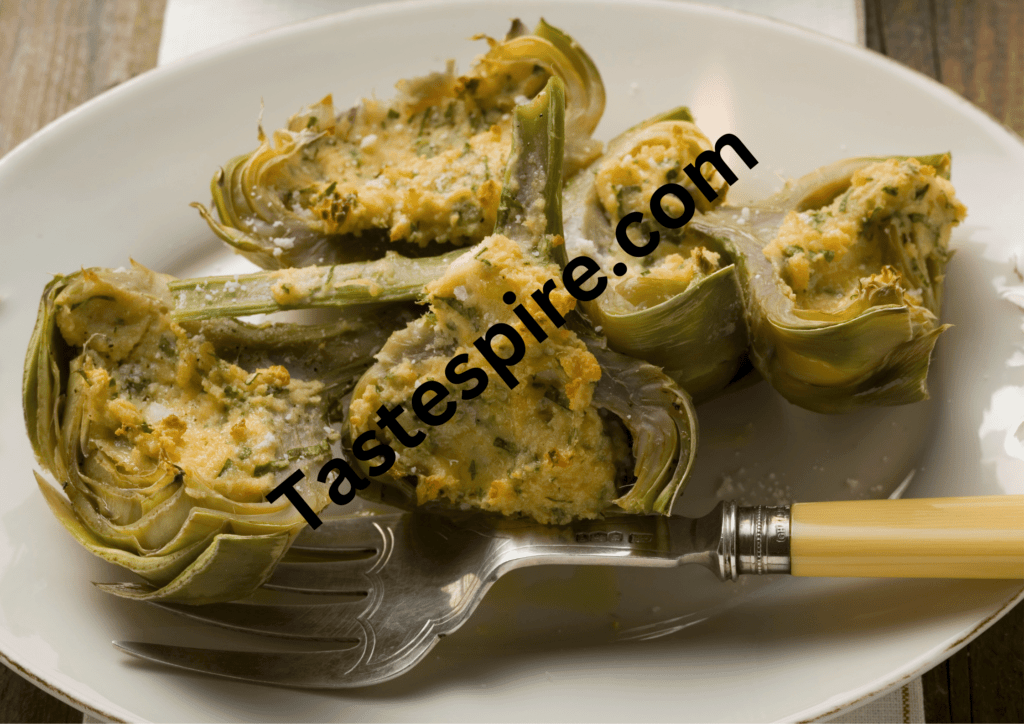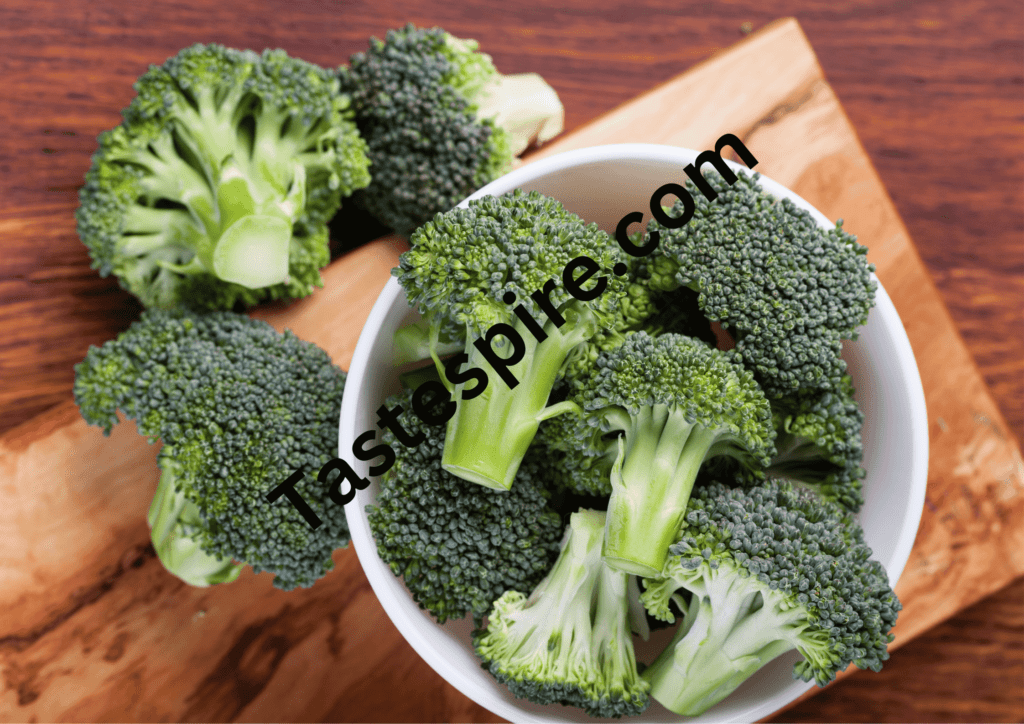Mushrooms, those delightful fungi that have found their way into countless dishes across the culinary world, have long been a favorite among chefs and home cooks. With their unique earthy flavor and satisfying texture, it’s no wonder they’re a kitchen staple. However, there are times when you might need to look for substitutes for mushrooms, be it due to allergies, dietary restrictions, or simply personal taste preferences.
In this article, we’ll delve into the world of mushroom substitutes, providing you with 15 delectable alternatives to elevate your dishes. Whether you’re a seasoned chef or an enthusiastic home cook, you’re bound to find something that suits your culinary needs. So, let’s explore these mouthwatering mushroom replacements.
Table of Contents
Why Substitute Mushrooms?
Let’s delve deeper into the reasons why someone might consider substituting mushrooms in their dishes:
- Allergies: One primary reason for seeking mushroom substitutes is allergies. Some individuals have allergies to certain types of mushrooms, which can range from mild discomfort to severe reactions. In such cases it’s crucial to find safe alternatives that won’t trigger allergic responses. By replacing mushrooms with suitable alternatives, people with mushroom allergies can continue to enjoy delicious meals without any health concerns.
- Dietary Restrictions: Another common factor is dietary restrictions. Many dietary plans, such as vegetarian or vegan diets, may exclude mushrooms due to personal preferences or specific guidelines. Some diets, like the Jain diet, prohibit the consumption of certain types of mushrooms for religious reasons. For those following such dietary restrictions, finding suitable substitutes is essential to maintain the integrity of their chosen eating habits.
- Flavor Preferences: Taste is subjective and not everyone enjoys the earthy, umami-rich flavor of mushrooms. Some individuals simply prefer other flavors or find mushrooms too strong for their liking. In such cases, opting for substitutes that provide different taste profiles allows individuals to customize their dishes to their liking while still enjoying the texture and versatility that mushrooms offer.
- Variety and Creativity: For adventurous cooks, the desire to try something new and experiment in the kitchen can be a compelling reason to substitute mushrooms. Exploring different ingredients and flavors can lead to unique culinary experiences and expand one’s cooking skills. By using alternatives to mushrooms, chefs can create diverse and exciting dishes that challenge their creativity and delight their taste buds.
- Availability: Mushrooms aren’t always readily available in every region or season. Depending on where you live, certain varieties of mushrooms may be difficult to find or they might be out of season. In such situations having a list of suitable substitutes on hand can be a lifesaver, ensuring that you can still prepare your favorite mushroom-based dishes, even when fresh mushrooms aren’t within easy reach.
In conclusion, while mushrooms are undoubtedly a culinary treasure, there are several valid reasons to consider substituting them. Whether it’s due to allergies, dietary restrictions, personal taste preferences, a desire for culinary experimentation, or the practicality of ingredient availability, finding the right mushroom alternative can enhance your dining experiences and open up a world of exciting possibilities in the kitchen.
Factors to Consider When Choosing Mushrooms Substitutes:
Let’s explore the essential factors to consider when choosing substitutes for mushrooms:
- Flavor: The first and foremost consideration when selecting a mushroom substitute is flavor. Mushrooms have a distinct earthy, umami-rich taste that can significantly influence the overall flavor of a dish. To ensure a successful transition, it’s crucial to choose a substitute with a flavor profile that complements your recipe. For example, if your dish relies on the earthiness of mushrooms, you might opt for a substitute like portobello mushrooms or cauliflower, which offer similar earthy notes. On the other hand, if you’re looking to introduce a different flavor dimension, alternatives like bell peppers or artichoke hearts can provide a unique taste.
- Texture: Texture plays a vital role in the success of a mushroom substitute. Mushrooms have a satisfying, slightly meaty texture that can enhance the mouthfeel of a dish. When selecting a substitute, consider whether you want to replicate this texture or try something different. Some alternatives, like eggplant or jackfruit, can mimic the meatiness of mushrooms, making them suitable for dishes where texture matters. In contrast, vegetables like zucchini or asparagus offer a distinct, yet delightful, texture that can add variety to your recipes.
- Nutritional Value: Nutritional value is another crucial factor, especially if you’re mindful of your diet and health. Mushrooms are known for their nutritional benefits, such as being low in calories, rich in vitamins, minerals, and antioxidants. When choosing a substitute, evaluate its nutritional content to ensure it aligns with your dietary requirements. For instance, lentils and chickpeas are protein-rich substitutes, making them excellent choices for vegetarian or vegan diets. Additionally, ingredients like bell peppers and broccoli provide essential vitamins and antioxidants, contributing to a well-balanced meal.
By considering these key elements flavor, texture, and nutritional value. You can make informed decisions when choosing the perfect alternative for your mushroom-based dishes. Whether you’re aiming to replicate the mushroom experience or add a unique twist to your recipes, these factors will guide you in ensuring a successful transition and a delightful dining experience.
15 Human- Health Friendly Substitutes for Mushrooms:
1. Portobello Mushrooms:

Portobello mushrooms are a natural choice as they share a similar earthy flavor and hearty texture with regular mushrooms. They’re perfect for various mushroom-based dishes like stuffed mushrooms and grilled Portobello burgers. Let’s delve deeper into the versatility of Portobello mushrooms:
- Flavor and Texture: Portobello mushrooms are an excellent choice as a substitute for regular mushrooms due to their shared earthy flavor and hearty texture. This similarity allows them to seamlessly fit into a variety of mushroom-based dishes.
- Stuffed Mushrooms: Portobello mushrooms are a fantastic option for stuffed mushroom recipes. Their large caps provide ample space for creative fillings, such as cheese, herbs, breadcrumbs, and other flavorful ingredients. Simply remove the gills and stem, fill them with your favorite stuffing, and bake them to perfection.
- Grilled Portobello Burgers: These mushrooms are ideal for creating mouthwatering vegetarian or vegan burgers. The large cap of the Portobello can serve as a substantial burger patty. You can marinate them in a flavorful sauce, grill them until tender, and sandwich them in a bun with all your favorite burger toppings.
- Versatile in Various Dishes: Beyond stuffed mushrooms and burgers, Portobello mushrooms can be used in many other recipes. They’re delicious in stir-fries, pasta dishes, and as a flavorful topping for pizzas. Their robust flavor and meaty texture make them a versatile ingredient in the kitchen.
Incorporating Portobello mushrooms into your recipes can add a delightful twist to your favorite mushroom-based dishes. Whether you’re a meat-lover or a vegetarian, these mushrooms provide a satisfying and flavorful alternative. Clean Portobello mushrooms carefully before to use it.
2. Cauliflower:

Cauliflower can mimic the texture of mushrooms, making it an excellent addition to soups, stir-fries, and even as a pizza crust. let’s explore the versatility of cauliflower as a mushroom substitute:
- Texture Mimicry: Cauliflower possesses a unique quality that allows it to mimic the texture of mushrooms when prepared correctly. This makes it a fantastic addition to a wide range of dishes.
- Soups: Cauliflower can be finely chopped or blended into soups to create a creamy and velvety texture, similar to what you’d expect from mushroom-based soups. Its neutral flavor allows it to take on the taste of the dish while providing a satisfying consistency.
- Stir-Fries: In stir-fries, cauliflower can be sliced or cut into small florets. When cooked, it offers a tender, slightly crisp texture that complements various ingredients and sauces, just like mushrooms would. Its ability to absorb flavors makes it an excellent addition to stir-fry dishes.
- Pizza Crust: Perhaps one of the more creative uses of cauliflower is as a pizza crust. By grating cauliflower, cooking it, and mixing it with other ingredients, you can create a low-carb, gluten-free pizza crust. This not only adds a unique flavor to your pizza but also makes it a healthier option for those with dietary restrictions.
Cauliflower’s ability to imitate the texture of mushrooms while adapting to various flavors and culinary applications makes it a valuable substitute in your kitchen. Whether you’re enhancing soups, stir-fries, or reimagining pizza night, cauliflower is a versatile choice.
3. Eggplant:

Eggplant offers a unique flavor and texture, akin to mushrooms. Try it in pasta dishes, stir-fries, and sandwiches. let’s explore how eggplant can be a delectable substitute for mushrooms:
- Unique Flavor and Texture: Eggplant brings a distinct flavor and texture to your dishes, making it a delightful alternative to mushrooms.
- Pasta Dishes: Eggplant can be a star ingredient in pasta dishes. You can slice or dice it and sauté until tender, creating a meaty and slightly creamy texture. Its flavor pairs well with pasta sauces, adding a delicious, smoky note to your favorite Italian recipes.
- Stir-Fries: In stir-fries, eggplant’s texture and flavor shine through. Cut into bite-sized pieces, it becomes tender and absorbs the savory flavors of stir-fry sauces, contributing a rich and satisfying element to your meal.
- Sandwiches: Eggplant can be used to craft a mouthwatering vegetarian or vegan sandwich. Grilled or roasted eggplant slices can serve as a substantial filling. They offer a hearty, meaty texture that’s both satisfying and packed with flavor.
Eggplant’s unique taste and texture, similar to mushrooms, make it an excellent choice for diversifying your dishes. Whether you’re a fan of pasta, stir-fries, or sandwiches, eggplant can seamlessly replace mushrooms, adding a touch of culinary creativity to your meals.
4. Zucchini:

Zucchini’s versatility shines in many dishes, from casseroles to fajitas. Its mild flavor complements various recipes. let’s explore the versatility of zucchini as a substitute for mushrooms:
- Versatility: Zucchini is a highly versatile vegetable that can be used in a wide range of dishes, much like mushrooms.
- Casseroles: Zucchini can be sliced or diced and added to casseroles. It offers a mild, slightly sweet flavor and a tender texture. In casseroles, it blends seamlessly with other ingredients, adding a delightful crunch.
- Fajitas: Zucchini can be sliced into strips and used in fajitas as a mushroom replacement. When sautéed or grilled, it develops a tender, slightly smoky quality, similar to mushrooms. Its mild flavor pairs well with the bold seasonings typically used in fajitas.
- Complementary Flavor: Zucchini’s mild flavor makes it an excellent choice for recipes where you want the other ingredients or seasonings to take the spotlight. Its ability to adapt to various flavors allows it to seamlessly complement a wide range of dishes.
Zucchini’s adaptability and compatibility with different flavors and cuisines make it a valuable addition to your kitchen when looking for alternatives to mushrooms. Whether you’re preparing casseroles or spicing up your fajitas, zucchini can enhance your dishes in a unique and delicious way.
5. Jackfruit:

Jackfruit’s meaty texture makes it a superb replacement for mushroom dishes. You can use it in tacos, curries, and sandwiches. let’s explore how jackfruit can be an excellent substitute for mushrooms:
- Meaty Texture: Jackfruit is known for its meaty texture, making it an exceptional choice as a mushroom replacement.
- Tacos: Jackfruit can be used in tacos, offering a texture reminiscent of shredded or pulled meat. When cooked and seasoned, it becomes tender and absorbs the flavors of the taco fillings. It’s a popular choice in vegetarian and vegan tacos for its satisfying texture.
- Curries: Jackfruit’s texture works well in curries, adding substance and a satisfying mouthfeel. As it simmers in rich and flavorful curry sauces, it soaks up the spices and seasonings, creating a delicious and hearty curry dish.
- Sandwiches: Jackfruit can serve as a substantial filling in sandwiches. Its meat-like consistency and ability to hold seasonings make it a great choice for creating a plant-based alternative to classic sandwiches. Whether you’re making BBQ sandwiches or vegan “pulled pork,” jackfruit can provide the right texture and flavor.
Jackfruit’s unique meaty texture and adaptability to various seasonings make it a superb choice for replacing mushrooms in your dishes. Whether you’re craving tacos, curries, or sandwiches, jackfruit can offer a delightful alternative that’s both satisfying and flavorful.
6. Tofu:

Tofu is a protein-rich substitute, especially for vegetarian and vegan recipes. It can be grilled, sautéed, or used in creamy dishes. let’s explore the versatility of tofu as a mushroom substitute:
- Protein-Rich: Tofu is renowned for its high protein content which make it an excellent choice for vegetarian and vegan recipes.
- Grilled: Tofu can be marinated and grilled to perfection, offering a savory, smoky flavor. Grilled tofu works well as a filling for sandwiches, a topping for salads, or as a standalone dish.
- Sautéed: When sautéed, tofu becomes crispy on the outside and tender on the inside. This texture is similar to sautéed mushrooms and is great for adding depth and substance to stir-fries, pasta dishes, and more.
- Creamy Dishes: Tofu’s ability to be blended into a creamy consistency makes it a versatile ingredient in recipes like vegan cream sauces, dressings, and desserts. Its neutral flavor allows it to adapt to the flavors of your dish while providing creaminess.
Tofu’s protein richness and adaptability to various cooking methods make it an ideal choice, especially for those following vegetarian or vegan diets. Whether you’re grilling, sautéing, or creating creamy dishes, tofu can serve as a satisfying and nutritious substitute for mushrooms in a wide range of recipes.
7. Seitan:

With its meaty texture, seitan is a great choice when you want to replace mushrooms in stews, stir-fries, or skewers. let’s delve into how seitan can be a fantastic substitute for mushrooms:
- Meaty Texture: Seitan is celebrated for its remarkably meat-like texture, making it an excellent choice for replacing mushrooms in various dishes.
- Stews: Seitan can be added to stews, where its texture resembles that of slow-cooked meat. It absorbs the flavors of the stew while maintaining a satisfying, chewy consistency.
- Stir-Fries: In stir-fries, seitan works wonderfully to provide substance and a hearty texture, similar to mushrooms. When stir-fried with vegetables and seasonings, it complements the dish’s overall flavor.
- Skewers: Seitan can be used in skewers, whether on the grill or in the oven. Its firm texture holds up well to the skewering process and it can be marinated or seasoned to create flavorful kebabs.
Seitan’s meaty texture and adaptability in stews, stir-fries, and skewers make it a superb choice for replacing mushrooms in a variety of dishes. Whether you’re crafting hearty stews or sizzling stir-fries, seitan can provide a satisfying alternative that’s reminiscent of traditional meat-based recipes.
8. Lentils:

Lentils offer a nutty flavor and a protein boost. They are perfect for hearty soups, pies, and pasta dishes. let’s explore how lentils can serve as a versatile substitute for mushrooms:
- Nutty Flavor: Lentils offer a delightful nutty flavor, which can add depth and richness to your dishes, just like mushrooms.
- Protein Boost: Lentils are a great source of plant-based protein, making them a valuable choice for those looking to increase their protein intake.
- Hearty Soups: Lentils are a perfect addition to hearty soups. They provide a substantial and filling quality to the soup, while their nutty flavor blends seamlessly with a variety of ingredients. Lentil soups are a comforting and nutritious choice.
- Pies: Lentils can be used in pies as a flavorful and protein-rich filling. Whether in savory pies or traditional pot pies, they contribute to a satisfying, hearty texture.
- Pasta Dishes: Lentils can be used as a mushroom substitute in pasta dishes. When cooked, they retain a slightly firm texture, adding a pleasant bite to your recipes. They pair well with various pasta sauces, creating a satisfying and nutritious meal.
Lentils’ nutty flavor, protein content, and adaptability in soups, pies, and pasta dishes make them an excellent alternative to mushrooms. Whether you’re preparing a comforting soup, a savory pie, or a hearty pasta, lentils can enhance your dishes with a unique and nutritious twist.
9. Chickpeas:

Chickpeas can add a creamy texture to your dishes. Consider using them in creamy sauces, soups, and curry. let’s explore how chickpeas can be a wonderful substitute for mushrooms:
- Creamy Texture: Chickpeas have a creamy quality when blended, making them an ideal choice to add a velvety texture to your dishes, similar to the smoothness mushrooms provide.
- Creamy Sauces: Chickpeas can be used to thicken and enrich creamy sauces. Whether you’re making a creamy Alfredo sauce or a vegan cheese sauce, blended chickpeas can create a luscious, dairy-free alternative.
- Soups: Chickpeas work well in soups, contributing a creamy and hearty element to the broth. They absorb the flavors of the soup while adding a pleasant creaminess.
- Curry: Chickpeas are a popular addition to curry dishes, enhancing their texture and creating a rich, creamy consistency in the sauce. They are a staple in many vegetarian and vegan curry recipes.
Chickpeas’ ability to add creaminess to your dishes makes them a versatile substitute for mushrooms, especially in recipes where a velvety texture is desired. Whether you’re making creamy sauces, hearty soups, or flavorful curries, chickpeas can contribute a satisfying and creamy element to your culinary creations.
10. Bell Peppers:

Bell peppers bring vibrant color and a sweet, slightly smoky flavor when used as a mushroom alternative. They work well in stir-fries, salads, and sandwiches. let’s explore how bell peppers can serve as a colorful and flavorful substitute for mushrooms:
- Vibrant Color: Bell peppers come in a variety of colors, such as red, yellow, and green, adding a burst of vibrancy to your dishes. Their vibrant hues can make your recipes visually appealing.
- Sweet, Slightly Smoky Flavor: Bell peppers have a sweet and slightly smoky flavor profile, which can provide a unique taste to your dishes, distinct from the earthy taste of mushrooms.
- Stir-Fries: Bell peppers work wonderfully in stir-fries, contributing both flavor and color. Their crunch and sweet notes can enhance the overall stir-fry experience.
- Salads: Sliced or diced bell peppers can be added to salads, introducing a refreshing and crisp element. Their vibrant appearance can make your salads more appealing and appetizing.
- Sandwiches: Bell peppers can be used in sandwiches to provide a delightful crunch and a sweet, smoky flavor. They complement various fillings and add a burst of flavor.
Bell peppers with their vibrant colors and sweet, slightly smoky taste, can be an excellent alternative to mushrooms, especially in dishes where you want to add visual appeal and a unique flavor profile. Whether you’re preparing stir-fries, salads, or sandwiches, bell peppers can elevate your recipes with their colorful and delicious presence.
11. Artichoke Hearts:

Artichoke hearts offer a unique taste and texture, making them a delightful addition to pasta, dips, and casseroles. let’s explore how artichoke hearts can be a distinctive and flavorful substitute for mushrooms:
- Unique Taste and Texture: Artichoke hearts bring a unique taste and texture to your dishes, setting them apart from mushrooms.
- Pasta: Artichoke hearts can be used as a delightful addition to pasta dishes. Whether you’re making a creamy Alfredo pasta or a zesty Mediterranean-inspired recipe, their flavor and texture can create a delicious contrast.
- Dips: Artichoke hearts are a star ingredient in many popular dips, such as spinach and artichoke dip. They add a rich and slightly tangy quality, making the dip creamy and indulgent.
- Casseroles: Artichoke hearts can be layered into casseroles, providing a hearty and distinctive component. Their unique taste can add depth and character to your casserole recipes.
Artichoke hearts with their unique taste and texture can be a delightful alternative to mushrooms, particularly in recipes where you want to infuse a distinct and delicious quality. Whether you’re enhancing pasta, creating dips, or crafting casseroles, artichoke hearts can elevate your dishes with their exceptional presence.
12. Asparagus:

The fresh, earthy flavor of asparagus pairs beautifully with many dishes. Try them in risottos, omelets, and grilled preparations. let’s explore how asparagus can be a fresh and earthy alternative to mushrooms:
- Fresh, Earthy Flavor: Asparagus offers a refreshing and earthy flavor that can complement a wide range of dishes, creating a delightful contrast to the earthy taste of mushrooms.
- Risottos: Asparagus can be a wonderful addition to risottos, contributing a crisp, tender texture and a burst of freshness. Its flavor pairs beautifully with creamy risotto recipes.
- Omelets: Asparagus can be used to enhance omelets, providing a vibrant and slightly crunchy element. Its earthy notes can add depth to your breakfast or brunch creations.
- Grilled Preparations: Asparagus can be grilled to perfection, creating a smoky and slightly charred quality. Whether as a side dish or a standalone component, grilled asparagus adds a delicious and refreshing aspect to your meals.
Asparagus, with its fresh and earthy flavor, can be a fantastic alternative to mushrooms, especially in recipes where you want to infuse a lively and distinct taste. Whether you’re preparing risottos, omelets, or grilled dishes, asparagus can elevate your recipes with its vibrant presence.
13. Celery:

Celery adds a satisfying crunch to your recipes. It’s excellent in salads, soups, and as a snack. let’s explore how celery can be a satisfying and crunchy substitute for mushrooms:
- Satisfying Crunch: Celery is celebrated for its crisp and satisfying crunch, making it an excellent choice when you want to add a refreshing texture to your dishes.
- Salads: Celery works wonderfully in salads, whether in leafy greens, pasta, or potato salads. Its crunch adds a contrasting element, creating a delightful eating experience.
- Soups: Celery can be diced and added to soups, where it retains its satisfying crunch even when cooked. It contributes a refreshing and slightly earthy flavor to the soup.
- Snack: Celery sticks make for a healthy and refreshing snack. They’re often paired with dips or spreads, offering a satisfying and low-calorie option for snacking.
Celery’s crisp and satisfying crunch can be an excellent alternative to mushrooms, particularly in dishes where you want to introduce a refreshing and textural element. Whether you’re preparing salads, soups, or simply enjoying it as a snack, celery can enhance your recipes with its invigorating presence.
14. Broccoli:

Broccoli’s mild, earthy flavor makes it a compatible substitute for mushrooms in various dishes, including stir-fries, quiches, and casseroles. let’s explore how broccoli can be a mild and earthy alternative to mushrooms:
- Mild, Earthy Flavor: Broccoli offers a mild and earthy flavor profile that can seamlessly blend with various dishes, creating a compatible substitute for mushrooms.
- Stir-Fries: Broccoli can be used in stir-fries, adding a slightly crunchy texture and its earthy notes to the dish. It pairs well with stir-fry sauces and other ingredients.
- Quiches: Broccoli can serve as a filling in quiches, contributing a pleasant and slightly nutty taste. Its texture complements the custardy nature of quiches, creating a delightful combination.
- Casseroles: Broccoli can be layered into casseroles, where its flavor and structure can add depth to the dish. It’s especially fitting in cheesy and creamy casserole recipes.
Broccoli’s mild and earthy flavor makes it a compatible alternative to mushrooms, especially in dishes where you want a subtle and harmonious addition. Whether you’re preparing stir-fries, quiches, or hearty casseroles, broccoli can enhance your dishes with its delightful presence.
15. Spinach:

Spinach is a versatile and nutritious replacement for mushrooms. It can be used in pasta, omelets, and salads. let’s explore how spinach can be a versatile and nutritious substitute for mushrooms:
- Versatile: Spinach is highly versatile and can be used in a variety of dishes, making it an excellent alternative to mushrooms.
- Pasta: Spinach can be added to pasta dishes, whether in a creamy Alfredo or a zesty tomato-based sauce. It wilts nicely, adding a fresh and slightly earthy flavor to your pasta.
- Omelets: Spinach can be incorporated into omelets, providing a vibrant and leafy element. Its slightly bitter notes can create a balance of flavors in your breakfast or brunch dishes.
- Salads: Spinach is a staple in salads, offering a nutritious and refreshing component. Its vibrant green color and mild taste can make your salads more enticing and healthy.
Spinach, with its versatility and nutritional value, can be a fantastic substitute for mushrooms, particularly in recipes where you want a leafy and nutritious addition. Whether you’re preparing pasta, omelets, or salads, spinach can enhance your dishes with its adaptable and healthful presence.
How to Use These Substitutes:
Here’s a breakdown of how to use these mushroom substitutes effectively:
- Consider Flavor Profiles: When using a substitute, think about the flavor profile of the dish you’re preparing. Some substitutes have unique flavors that can complement or enhance your recipe.
- Experiment with Recipes: Don’t be afraid to try new recipes or tweak your existing ones. Each substitute can be used in various ways, so get creative in the kitchen.
- Texture Matters: Please consider the substitute’s texture as a crucial factor to focus on. Some might be a close match to mushrooms, while others offer a different mouthfeel. Choose one that fits your dish.
- Adjust Cooking Techniques: Adapt your cooking techniques to match the substitute’s characteristics. For instance, if you’re using cauliflower as a substitute, consider roasting or sautéing it to achieve a satisfying texture.
- Combine Substitutes: You can mix and match substitutes to create unique flavor and texture combinations. Experimenting with different combinations can lead to delicious results.
- Consider Dietary Needs: Keep your dietary needs in mind. Some substitutes, like tofu or chickpeas, are excellent choices for vegetarian and vegan diets, while others may cater to gluten-free or other dietary requirements.
- Stay Open to Change: Be open to the idea that the substitute might not exactly replicate the mushroom’s taste and texture. Sometimes, the uniqueness of the substitute can bring an exciting twist to your dish.
- Be Mindful of Cooking Times: Different substitutes may have varying cooking times. Ensure you adjust the cooking duration to avoid overcooking or undercooking.
- Seek Inspiration: Look for recipes that specifically use the substitute you’ve chosen. It can provide you with ideas on how to use it effectively.
- Enjoy the Journey: The process of discovering the perfect substitute for your favorite mushroom-based recipes should be enjoyable. Embrace the adventure of trying new flavors and textures.
Remember, there’s no one-size-fits-all approach to using these substitutes. Tailor your choices to your specific preferences and dietary needs and above all, have fun exploring the diverse world of mushroom alternatives in your culinary endeavors.
FAQs
What can I use instead of mushrooms in a recipe?
When you need to replace mushrooms in a recipe, there are several versatile options to consider. Depending on your preferences and the specific dish, you can substitute mushrooms with:
- Portobello Mushrooms: Portobellos are a natural choice as they have a similar earthy flavor and hearty texture.
- Cauliflower: Cauliflower can mimic the texture of mushrooms and works well in a variety of dishes.
- Eggplant: Eggplant offers a unique flavor and texture similar to mushrooms, making it a great alternative.
- Zucchini: Zucchini’s versatility and mild flavor make it an excellent substitute for mushrooms in many recipes.
Which vegetable is equal to mushroom?
While no vegetable is an exact replica of mushrooms, some come close in terms of texture and flavor. Portobello mushrooms, cauliflower, eggplant, and zucchini are some of the vegetables that are often considered equal to mushrooms due to their similar characteristics.
What food has the same texture as mushrooms?
Several foods can mimic the texture of mushrooms in dishes. These include:
- Cauliflower: When prepared correctly, cauliflower can replicate the texture of mushrooms in various recipes.
- Tofu: Tofu’s firmness and ability to absorb flavors make it a great option for achieving a similar texture.
- Seitan: Seitan has a meaty texture, making it suitable for replacing mushrooms in certain dishes.
- Lentils: Lentils, when cooked, provide a similar bite and texture to mushrooms.
What are Substitutes for mushrooms in pasta?
When replacing mushrooms in pasta dishes, consider using:
- Eggplant: Sliced or diced eggplant can add a meaty texture to pasta sauces.
- Zucchini: Zucchini, when spiralized or sliced thinly, can stand in for mushrooms in pasta recipes.
- Artichoke Hearts: Chopped artichoke hearts can bring a unique flavor and texture to pasta dishes.
- Asparagus: Asparagus can be a great addition to pasta, providing an earthy flavor.
What are Substitutes for mushrooms in cooking?
In cooking, various alternatives can replace mushrooms:
- Portobello Mushrooms: These offer a similar taste and texture for mushroom-based recipes.
- Cauliflower: Cauliflower can be used to mimic mushroom texture.
- Bell Peppers: They bring color and flavor to dishes as a mushroom substitute.
- Jackfruit: Jackfruit is a suitable alternative in recipes that require a meaty texture.
What are Vegan substitutes for mushrooms?
If you’re looking for vegan substitutes for mushrooms, consider these options:
- Cauliflower: For texture and versatility.
- Tofu: As a protein-rich alternative with a neutral flavor.
- Lentils: For a nutty, protein-packed option.
- Chickpeas: To add creaminess and protein to vegan dishes.
What are Mushroom substitutes in stroganoff?
In a stroganoff recipe, you can use the following mushroom substitutes:
- Seitan: Due to its meaty texture, seitan works well in stroganoff dishes.
- Tofu: Firm tofu can provide a protein-rich alternative.
- Lentils: Lentils offer a nutty flavor that complements the creamy stroganoff sauce.
What are Mushroom substitutes for chicken?
When seeking mushroom substitutes for chicken-based dishes, consider using:
- Jackfruit: Jackfruit’s texture can mimic shredded chicken in recipes.
- Tofu: Firm tofu can be marinated and prepared in a way that resembles chicken.
- Seitan: Due to its meaty texture, seitan can be used to replace chicken in certain dishes.
What are Mushroom substitutes for meat?
To substitute mushrooms for meat, try:
- Jackfruit: Jackfruit’s meaty texture works well in place of meat in various dishes.
- Tofu: Tofu can be seasoned and cooked to imitate the texture of meat.
- Lentils: Lentils offer a hearty, protein-rich alternative in meat-based recipes.
- Seitan: With its meat-like texture, seitan can be used as a meat substitute in certain dishes.
Conclusion:
In conclusion, mushrooms are a beloved ingredient in the culinary world, but there are many valid reasons to seek substitutes. Whether you’re dealing with allergies, dietary preferences, or simply looking for a change, the world of mushroom alternatives is rich and diverse.
With 15 fantastic substitutes at your fingertips, you can explore a wide range of flavors, textures, and culinary experiences. Remember to consider the factors that matter most to you, such as flavor, texture, and nutritional value when choosing the perfect replacement for mushrooms. So, go ahead, embark on your culinary journey, and elevate your dishes with these delicious alternatives!
